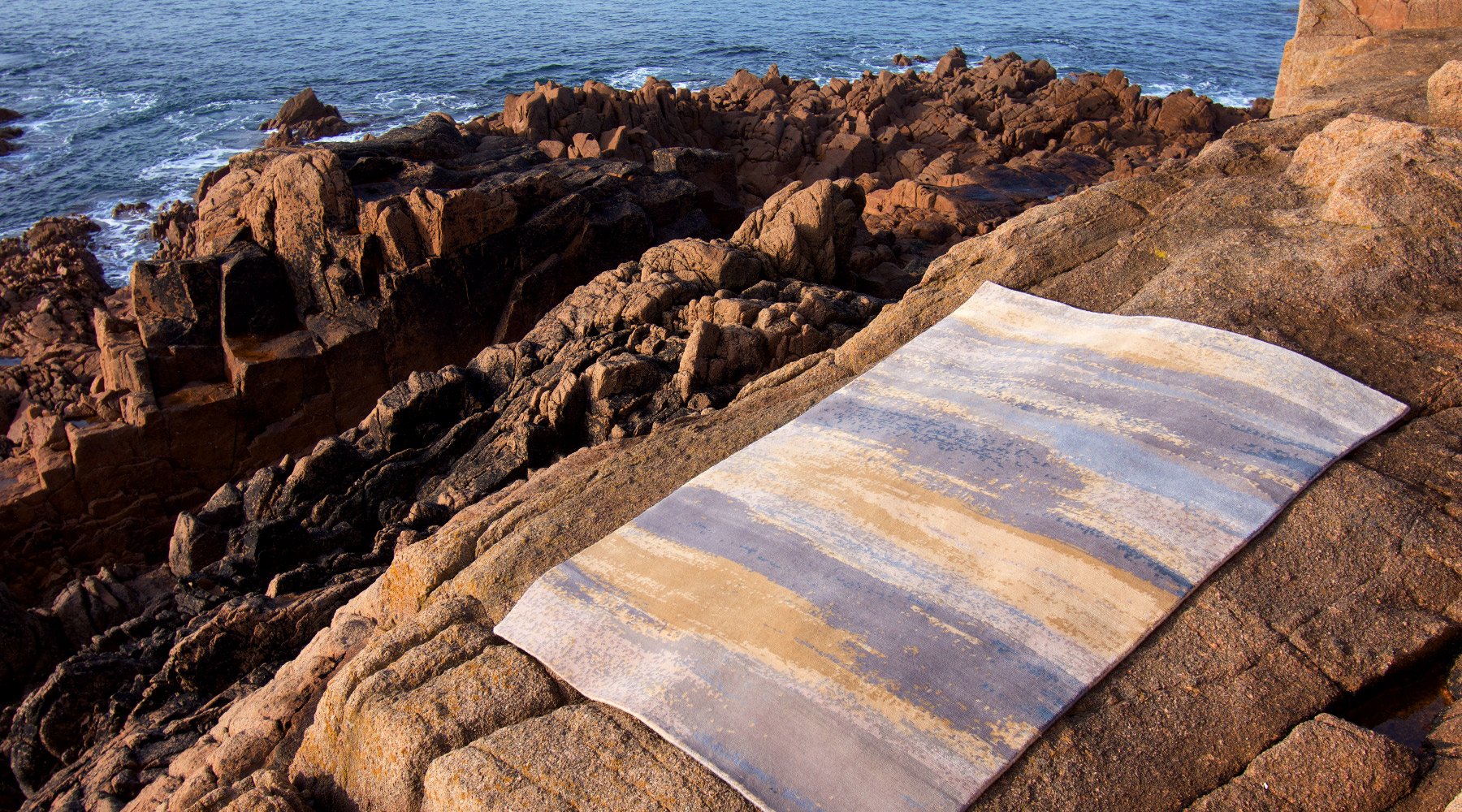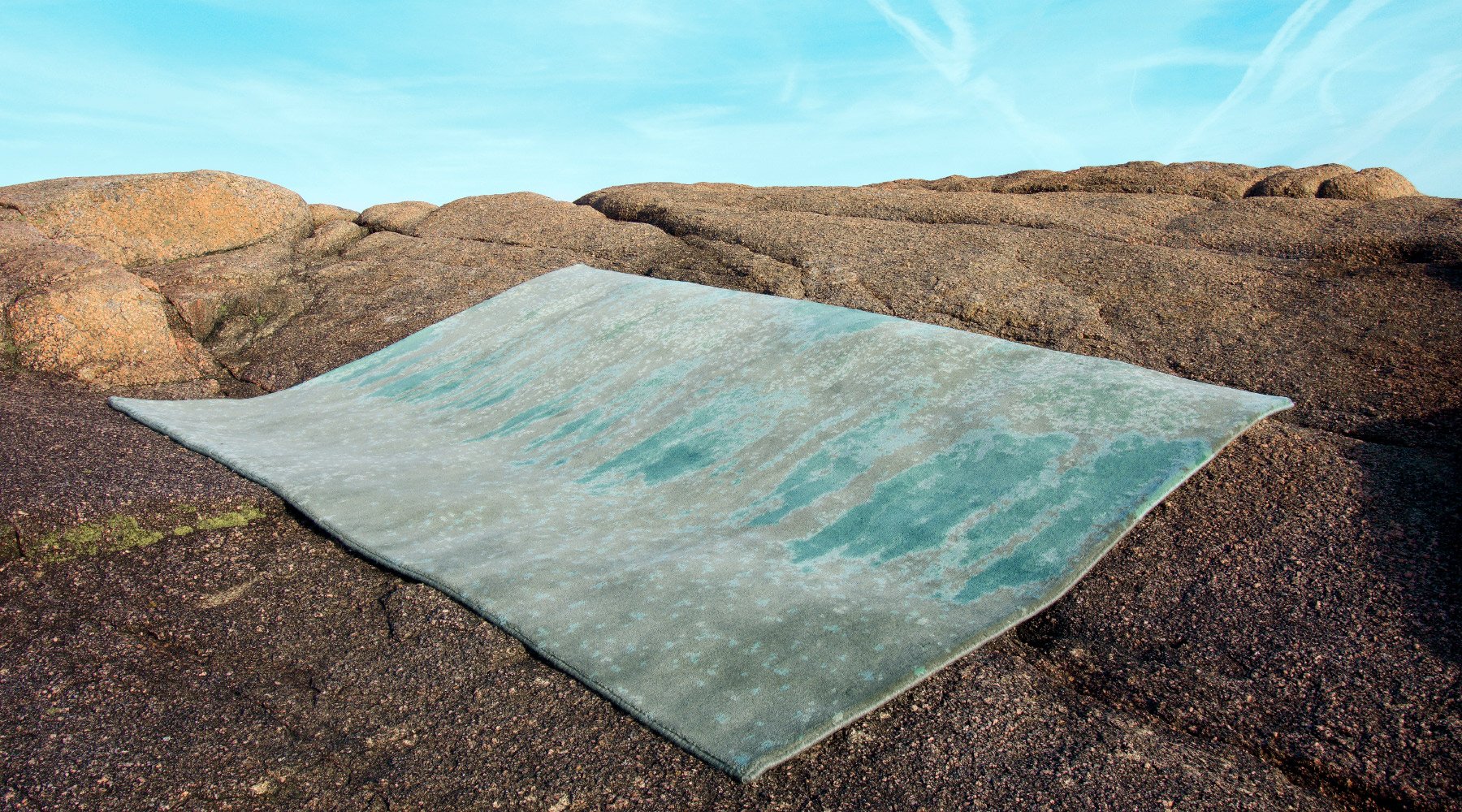Biophilic design and biomimicry
What is biophilic design?
In this blog we explore the concept of ‘Biophilic design’ and how it relates to Claire Gaudion’s nature-inspired textile work. Biophilia means a love of nature and describes human’s intrinsic connection with nature. Do you ever take a break in the countryside or walk in the park to refresh your senses? Do you seek out nature as a retreat or to boost your mood? Simple attractions in our homes such as fresh flowers and plants can make us happier as we go about our busy lives. This is the essence of Biophilic design - bringing nature and references to nature indoors to enhance our mood, behaviour and well-being. Biophilic design does this by using nature and natural processes within the built environment with measurable, positive effects that support human health and well-being.
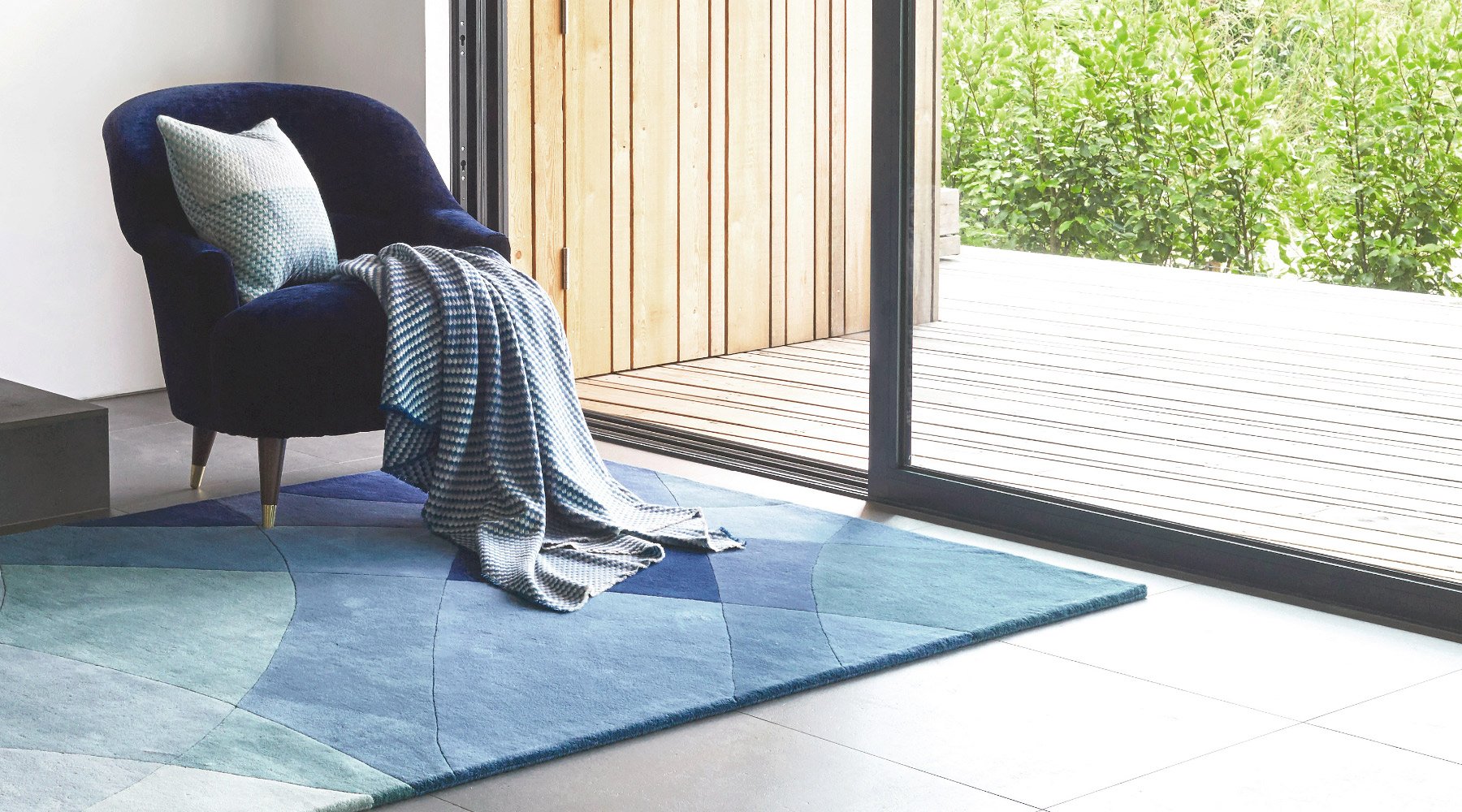
Claire Gaudion’s close relationship with nature as her inspiration for textile design, lends itself readily to the exploration of Biophilic design. So how do we make the best design use of human’s connection to nature in the spaces we live and work in? Current research on biophilia and suggests a number of ways that nature and natural processes can be integrated into the design of built environments - in direct and indirect ways.
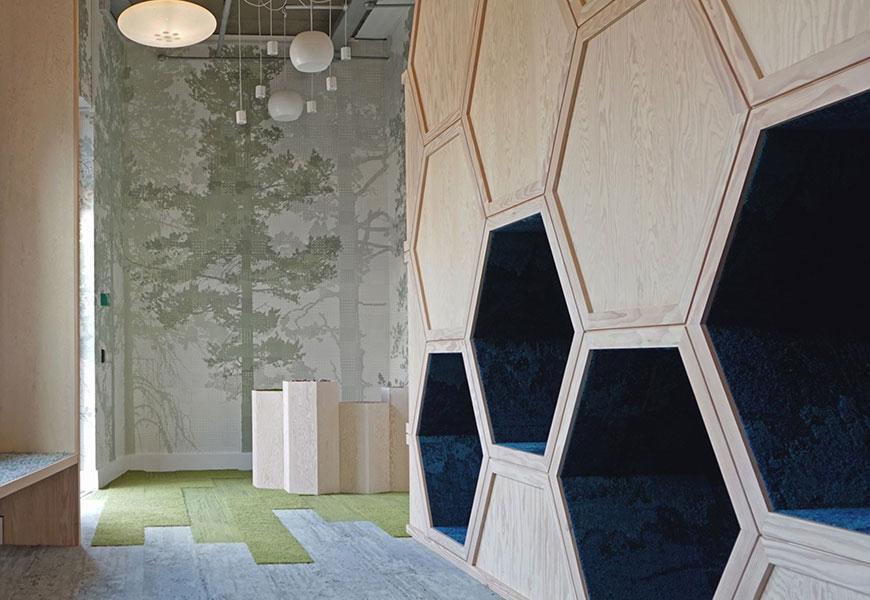
Image: Oliver Heath Design an industry leader in biophilic and sustainable design.
Direct Biophilic Design elements include:
Plants
Light
Air and ventilation
Water
Animals
Views of natural landscapes / vistas
Experience of Seasonal and Weather changes
Fire
Natural scents
Direct references in Biophilic design refer to the more obvious elements of nature such as natural light, plants, fresh air and ventilation as well as views of natural landscapes[1]. These direct means can indeed positively impact how we feel, but these are just the beginning of the story. Research shows that using a diversity of nature references and biomimicry - including colour, pattern and texture - have significant and important roles to play. Such indirect references can add significant meaning and increase our happiness and well-being[2]. This is what really captivates us at the Claire Gaudion design studio on a daily basis. Such indirect references include materials, colours, shapes, patterns and forms found in nature. Claire’s designs draw intuitively on nature for inspiration so we’re particularly interested in how these design analogues are being proven to support our well-being and happiness in our homes and work places.
“Nature has always been my biggest inspiration. Observing its rhythm of light, shadows, colours, textures and scale, and understanding its effect on our wellbeing is something that I’m instinctively drawn to.” Claire Gaudion
Claire is inspired everyday by nature’s colours, materials and textures. Her design process involves playing creatively with the tones, shapes and forms seen in nature, and bringing these elements together to create rich multi-sensory textile experiences. We next take a look at these indirect references in more detail.
Indirect Biophilic Design elements include:
Natural Colours
Natural Materials and Textures
Biomimicry - Shapes and Forms from Nature
Richness of multi-sensory information
Natural Colours
Colour has a major role in our design process, and in Biophilic Design. And, while there are many variables that can effect how we perceive and respond to colour (which we have explored before on this blog in the article Understanding How We React to Colour) there is some consensus in Biophilic design research around the colours that have a positive effect on our mood and behaviour, due to their association with nature. Here’s a summary of what recent studies have discovered[3]:
Blues and cyans make us think of clear sky and the sea. These colours feature prominently in our collections. Some of our bestsellers are in this palette of blue, cyan and blue-greens.

Shades of green are associated with healthy plants and thriving natural landscapes. Blue and medium greens have been shown to enhance creative performance and viewing dark to medium greens can lower the heart rate, improve blood pressure, and alleviate stress. Green in particular is a proven trigger for motivation, enthusiasm and productivity.
Red is generally associated with fruits such as apples or berries. Red can support cognitive behaviour for complex intense tasks, but too much can be over-stimulating so use bright colours in balance with others. Moderation is recommended and these colours make perfect room accents, as cushions and blankets for example.
White and yellow are often associated with the sun and happiness. Our Fontenelle Rug takes inspiration from the north coast of Guernsey, where the colours of the sea and sky seem to merge together in the shifting light and accents of yellow lichen, akin to brushstrokes across the shoreline, and wild flowers on the headland add a glow to this colour palette. Yellows and golds blend well with neutrals and blues, and can add warmth and enhance natural light, especially in north-facing interiors.
There will always be a degree of individuality associated with colour preference. Many colours have cultural associations that vary significantly from place to place. Plus, we all have individual colour memories which affect how we perceive colour – some positive and some negative.
Grey and dull colours used in the workplace have been found to impact negatively on stress levels. This finding sparks a whole array of questions about using colour.What shade of grey triggered increased stress levels? Did different shades of grey all have the same effect? Was grey the only colour in the room, or was it used in combination with other colours? What were the lighting conditions? We believe grey is a wonderful mixer and bridging colour, so incorporating grey into palettes with colours that trigger positive responses can have a very different effect. More research is needed on the effects of variations in tone and nuances of colour.
Natural Materials and Textures
Humans are drawn to tactile and natural materials. Natural materials such as wood, stone and wool have been proven to be calming and beneficial to have in your home. Using natural textures brings comfort, warmth and authenticity to interior spaces, and have even been shown to benefit creative performance as well as lower blood pressure.

Natural fibres form the mainstay of our textile collections for their tactile and aesthetic qualities. They feel and look authentic and familiar, and more attuned to the human touch. There are further added benefits to using materials such as wool, from natural acoustic characteristics, to air purifying qualities. If you’d like to know more about these, click over and read about Why We Choose Wool for Rugs.
Biomimicry - Shapes and Forms from Nature
Shapes and forms from nature, often called biomimicry, bring many benefits to Biophilic design[4]. Research shows that we have a visual preference for these symbolic references to contours, patterns, textures or numerical arrangements that exist in nature - from complex repeating patterns (or fractals) to the seemingly random pattern of a rocky coastline. These visual references of organic forms can reduce stress as well as increase concentration and cognitive performance.
Key characteristics of biomorphic patterns include:
Natural Symmetry which gives a sense of balance and completion
Spirals and curves that are eye-catching
Fractals and Fibonacci sequences that are reassuring and authentic
Stripes and spots that hold our attention and add curiosity
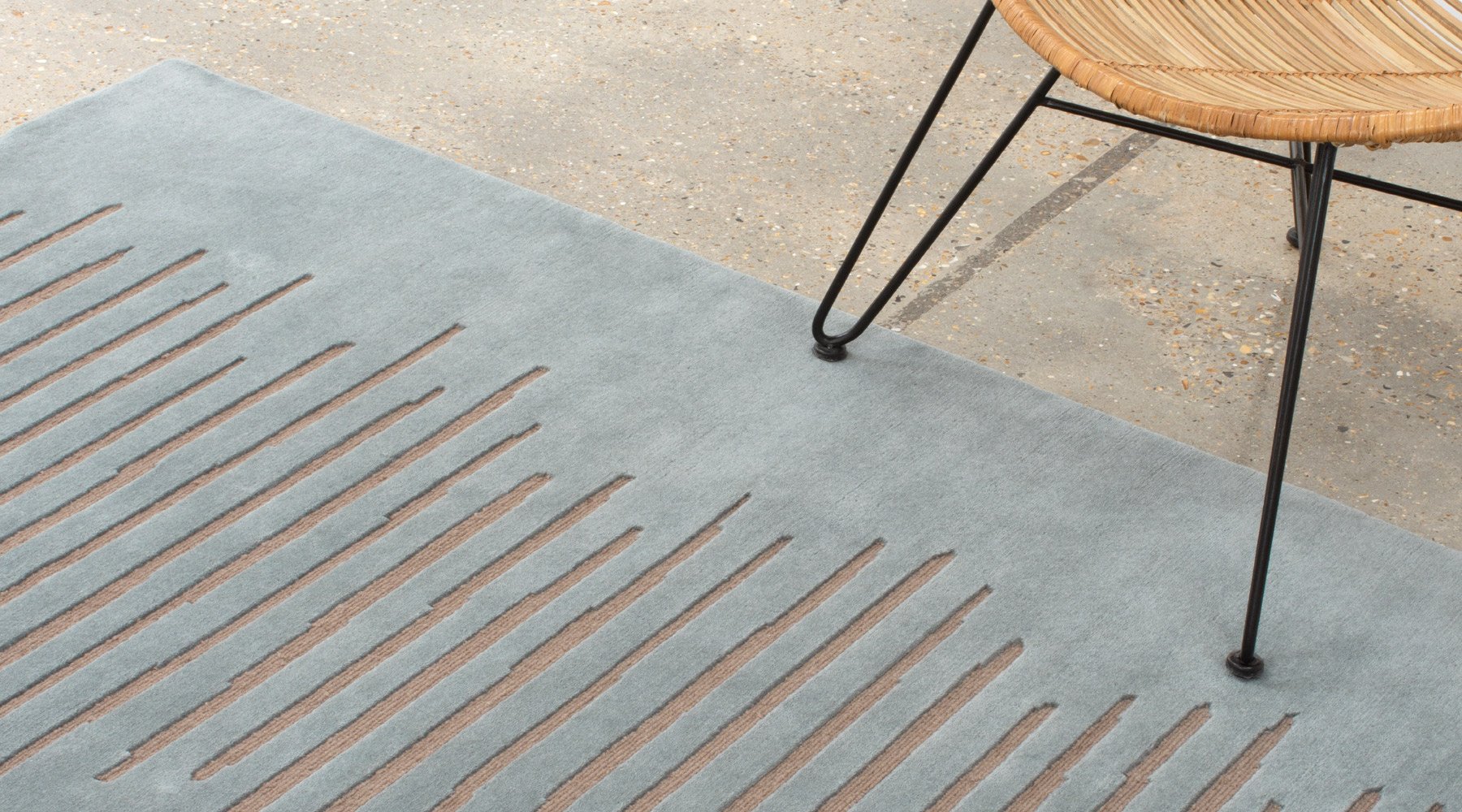
Random patterns such as ripples in the ocean and abstract patterns that reference nature and bring rich textural interest
Tessellations such as the repetitive, continuous patterns of honeycomb, or the uninterrupted overlapping patterns of feathers, which feel nurturing and comforting
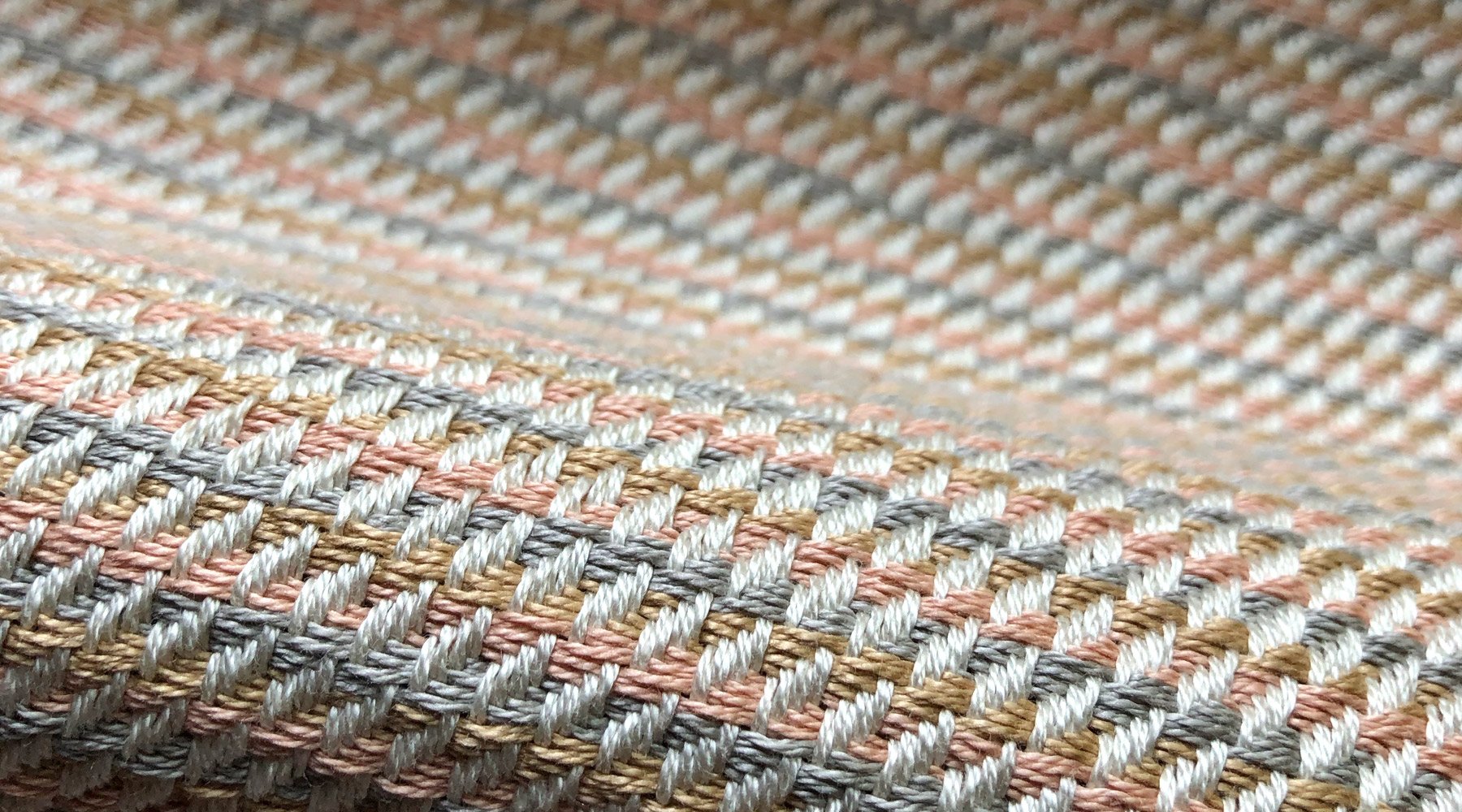
Richness of multi-sensory information
One of the key messages from this research is that with all aspects of Biophilic Design there is an advantage to combining elements and incorporating a diverse range of design strategies to bring more positive well-being effects. Using a diverse range of textures and colours and including variations in patterns creates better and more effective Biophilic design. As complex human beings we enjoy rich and interesting contrasts. We measure things in relation to others. This is why mixing soft with hard surfaces, or smooth with rich textures creates a pleasing affect. And, everything is best used in balance – as it is in nature.
[1]Dr. Stephen Kellert for Human Spaces blog: Nature by Design: the Practice of Biophilic Design, 2015.
[2]Terrapin Bright Green: 14 Patterns of Biophilic Design– improving health & well-being in the build environment, 2014.
[3]Human Spaces: The Global Impact of Biophilic Design in the Workplace.
[4]Interface: 14 Patterns of Biophilic Design.
Oliver Heath for Human Spaces blog: Ecological Valence Theory and the Use of Color.
Recommended by us
- Casino Non Aams Italia
- Non Gamstop Casinos
- Gambling Sites Not On Gamstop
- UK Casinos Not On Gamstop
- Betting Sites
- Non Gamstop Casinos
- Non Gamstop Casinos UK
- UK Casino Not On Gamstop
- Non Gamstop Casino Sites UK
- Non Gamstop Casinos
- Online Casinos
- Non Gamstop Casino
- Non Gamstop Casino UK
- Non Gamstop Casino
- Best Casino Sites Not On Gamstop 2025
- Migliori Casino Non Aams
- UK Casino Sites
- Best Non Gamstop Casinos
- Casinos Not On Gamstop
- Meilleur Casino En Ligne Francais
- Online Casinos Nederland
- Casino Sites Not On Gamstop
- Casino Online Non Aams
- Casino Not On Gamstop

